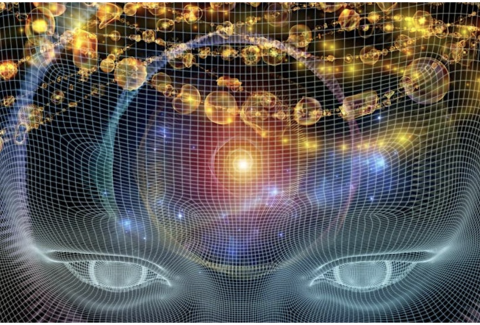Selecting Reinforcers in Contingency Management: Enhancing Motivation and Behavior Change

Selecting Reinforcers in Contingency Management: Enhancing Motivation and Behavior Change
Contingency Management (CM) is a highly effective behavioral therapy approach that relies on the principles of reinforcement to promote positive behavior change.[1] Central to the success of CM interventions is the careful selection of reinforcers — incentives or rewards — that motivate clients to engage in desired behaviors. This article delves into the significance of selecting appropriate reinforcers in CM, exploring strategies, considerations, and the scientific rationale behind effective reinforcement practices.
Understanding Reinforcers in Contingency Management
Reinforcers play a pivotal role in CM by incentivizing clients to adopt and maintain target behaviors. These can range from tangible rewards (such as vouchers, prizes, or privileges) to social reinforcers (verbal praise, recognition) and internal rewards (personal satisfaction, sense of accomplishment).[2] The key to effective reinforcement lies in identifying and utilizing incentives that are meaningful and motivating for each individual client.
Principles of Effective Reinforcement Selection
Individualization and Preference Assessment
The first step in selecting reinforcers is conducting a thorough assessment of client preferences and interests. Understanding what motivates each client is crucial for identifying incentives that will be perceived as rewarding.[3] This can be achieved through direct consultation with the client, preference assessments, and trial periods to gauge responsiveness to different reinforcers.
Immediate and Contingent Delivery
Reinforcers should be delivered immediately following the occurrence of the target behavior (contingent upon the behavior), reinforcing the connection between the behavior and the reward.[4] Delayed reinforcement may weaken the association and reduce motivation.[5] Timely delivery enhances the effectiveness of the reinforcement process.
Gradual Reinforcement Schedules
Initially, reinforcement may be provided frequently to establish and strengthen new behaviors. As behaviors become more consistent, gradually transitioning to intermittent reinforcement schedules (where rewards are provided intermittently) helps maintain long-term behavior change.[6] This approach prevents dependency on continuous reinforcement while sustaining motivation over time.
Monitoring and Adjustments
Continuous monitoring of client responses to reinforcers is essential. Not all incentives will be equally effective for every client, and preferences may change over time. Regular assessment and adjustment[7] of reinforcement strategies ensure that interventions remain tailored and responsive to individual needs and preferences.
Strategies for Selecting Effective Reinforcers
Diverse Reinforcer Options
Offer a variety of reinforcers to accommodate individual preferences. This may include options such as monetary incentives, privileges (e.g., extra break time, preferred seating), tokens or points redeemable for rewards, or social reinforcements (e.g., verbal praise, certificates).[8]
Matching Reinforcers to Behavior Goals
Align reinforcers with the specific behaviors targeted for change. For example, if the goal is to increase attendance, consider rewards related to attendance milestones (e.g., perfect attendance for a month earns a special reward).
Considering Ethical and Practical Considerations
Ensure that selected reinforcers are ethical, culturally appropriate, and feasible within the treatment setting. Avoid reinforcing behaviors that may have unintended negative consequences or are incompatible with long-term therapeutic goals.[9]
Evidence-Based Benefits of Effective Reinforcement Practices
Research consistently demonstrates the effectiveness of well-selected reinforcers in promoting behavior change across diverse populations and settings.[10] Studies highlight that personalized and contingent reinforcement strategies significantly enhance client engagement, adherence to treatment, and sustained improvements in targeted behaviors.
Conclusion
Selecting appropriate reinforcers in Contingency Management is both a science and an art. By tailoring incentives to individual preferences, behaviors, and treatment goals, clinicians maximize client motivation and promote lasting behavior change. Effective reinforcement practices not only enhance treatment outcomes but also foster a collaborative therapeutic relationship built on trust, encouragement, and positive reinforcement.
In summary, the strategic selection of reinforcers in CM underscores its role in fostering motivation, empowering clients, and achieving meaningful behavior change. By applying evidence-based principles and considering individual preferences, clinicians can optimize the impact of CM interventions and support clients in achieving their therapeutic goals with confidence and compassion.
[1] Zajac, Kristyn, Sheila M. Alessi, and Nancy M. Petry. “Contingency management approaches.” The Routledge handbook of philosophy and science of addiction. Routledge, 2018. 455-463.
[2] Higgins, Stephen T., and Randall E. Rogers. “Contingency management and the community reinforcement approach.” Evidence-based addiction treatment (2009): 249-266.
[3] Stitzer, Maxine L., et al. “Community reinforcement approach and contingency management interventions for substance abuse.” Handbook of Motivational Counseling: Goal‐Based Approaches to Assessment and Intervention with Addiction and Other Problems (2011): 549-569.
[4] Rash, Carla J., Sheila M. Alessi, and Kristyn Zajac. “Examining implementation of contingency management in real-world settings.” Psychology of Addictive Behaviors 34.1 (2020): 89.
[5] Petry, Nancy M., et al. “A randomized trial of contingency management reinforcing attendance at treatment: Do duration and timing of reinforcement matter?.” Journal of consulting and clinical psychology 86.10 (2018): 799.
[6] Davis, Danielle R., et al. “A review of the literature on contingency management in the treatment of substance use disorders, 2009–2014.” Preventive medicine 92 (2016): 36-46.
[7] Petry, Nancy M., et al. “Contingency management interventions: From research to practice.” American Journal of Psychiatry 158.5 (2001): 694-702.
[8] Erath, Tyler. “The fourth wave of the US overdose crisis: Disseminating incentive-based interventions for stimulant use disorder into rural community settings.”
[9] Petry, Nancy M. “Contingency management treatments: controversies and challenges.” Addiction (Abingdon, England) 105.9 (2010): 1507-1509.
[10] Petry, Nancy M. Contingency management for substance abuse treatment: A guide to implementing this evidence-based practice. Routledge, 2013.






